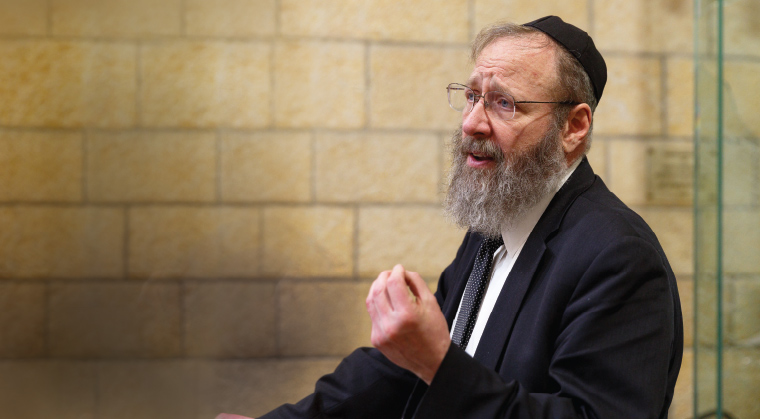Hold On to the Dream

Rav Aaron Lopiansky, author of Orchos Chaim: Ben Torah for Life, says the challenge facing today’s breadwinner is to create realistic goals and craft a new message

Photos: Elchanan Kotler, Jeff Cohen
The man who wrote what might be the best storybook of the year doesn’t want to be interviewed.
It isn’t about him, he points out, and while he’s right that the thin blue volume with the unexceptional cover and rather generic name isn’t about his life, it is the story of everyone else’s life.
It’s the narrative familiar to a generation of 20-somethings who sit at Shalosh Seudos picking at slices of gefilte fish and wondering who they are, if bein hazmanim is still in effect, and why they are so, so tired.
It’s that awkward moment between “Who are your chavrusas this zeman” and “Actually, I’m working now… yes, commercial mortgages… thank you, I’m still learning the ropes.”
And a blow to the ego is the easiest part of it.
The path that starts with the snip of scissors and a large tallis and honey on holy letters is cushioned, a system of yeshivos feeding other yeshivos, questions that lead to answers.
Until there’s no easy answer.
Suddenly, the comfortably trodden path splits into a crisscross of interlaced roads and passages: a thousand young couples in a hurtling subway train, reaching for a strap that isn’t there.
The familiar system that offered answers about fleishig onions and milchig knives isn’t there, and the gaping empty space allows gray light to filter in, the world appearing like a pencil drawing which has been rained on — lines still visible, but smudged.
Rav Aaron Lopiansky has just finished delivering a shiur in the Passaic kollel, and we’ve made up to meet in the rosh kollel’s basement.
But there’s a picture on the wall, and it has pulled Rav Aaron in, so I wait. It’s a charming depiction of a Meah Shearim bookseller hunched over the long counter of a high-shelved store, a wall of colorful seforim rising behind him.
The rosh yeshivah of Yeshiva of Greater Washington is standing and studying the image.
I ask him if it takes him back to that world — the alleys of Meah Shearim where his in-laws, Rav Beinish and Rebbetzin Esther Yenta Finkel, lived; the island of the Mirrer Yeshivah; the rooms of the Meah Shearim shtiblach where gravelly voiced men never finish davening, arguing, smoking — and if that’s what’s drawing him so.
As with every other question I will ask, he thinks for a while before answering. “It has a magic. But so does Silver Spring, or every place, really. My rebbi, Rav Moshe Shapira, would meet a person, or visit a new place, and get completely engaged. I’m a naturally curious person, but he was the one who could really tap the essence of a person or place as soon as he saw it.”
Perhaps without realizing it, the Rosh Yeshivah has answered my primary question. I had been wondering why he chose to write a book about the challenges and process of shifting from yeshivah to the workplace: With such a rich, broad inner world of Torah, why make this your magnum opus?
But he’s answered it. A man who can look at a picture and be back in Meah Shearim perceives how opening a Mishnayos during lunch in a law firm can put you back in kollel.
Oops! We could not locate your form.













